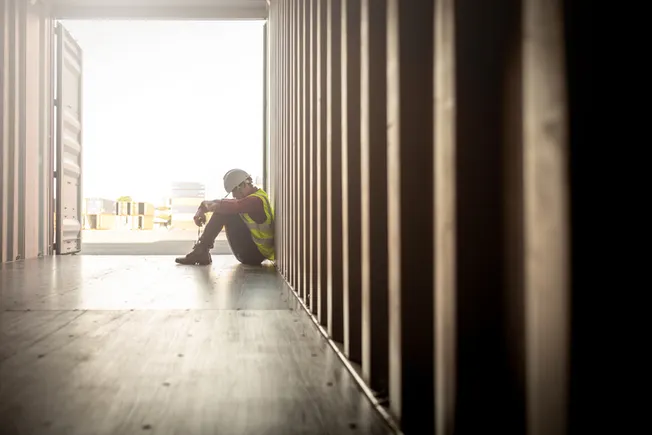ORLANDO, Fla. — Workplace safety experts have long been focused not just on workers’ physical wellbeing but their mental health as well. That rang true at the American Society of Safety Professionals 2025 Expo and Conference in July.
“It definitely is [our responsibility],” said Wesley Wheeler, executive director of safety for the National Electric Contractors Association. “We are the eyes and ears of our contractors.”
Wheeler’s comments came during a panel discussion, but it was far from the only event at the conference where worker mental health was brought up.
Panelists also discussed the need to remove the “macho” stigma in industries like construction that can negatively impact men in particular and how to spot the warning signs of someone struggling with mental health issues.
Those indicators include workers who don’t regularly maintain their hygiene, have a sudden rapid drop in productivity or increasingly keep to themselves when they may have otherwise been social.
“You will notice these things if you are in tune with your workers,” said Georgia Bryce-Hutchinson, mental health consultant for Exton, Pennsylvania-based healthcare provider Carebridge.
Construction’s long hours, demanding physical labor and tough-guy mentality can contribute to mental health issues, said Chris Trahan Cain, executive director of Silver Spring, Maryland-based CPWR — The Center for Construction Research and Training.
“A growing number of deaths are not from falls or electrocutions. They’re from suicide on the job or drug overdose on the job,” Cain said.
Conference organizers handed out ASSP poker chips with 988 on the back — the national suicide hotline number — before and after the panel. Wheeler said that the poker chip can be used as a tool in a personal or group setting to open pathways to conversation around mental health.
Cain suggested that a safety manager give a chip to a worker they are concerned about with no further discussion, highlighting the option for a subtle nudge rather than an immediate discussion, which might not be comfortable.
Language, literally
At another presentation, two speakers stressed the importance of language as a factor in worker mental health and suicide prevention.
Sonya Bohmann, executive director of the Frankfort, Illinois-based Construction Industry Alliance for Suicide Prevention and Loretta Mulberry, a Spanish-to-English interpreter and industry advocate, discussed the importance of the vocabulary used to talk about mental health issues.
For example, Bohmann and Mulberry encouraged attendees to use the term “die by suicide” rather than “commit” as well as describing someone as “having” a mental illness, rather than “being mentally ill.”
Doing so, Bohmann said, can underscore that mental health is part of a greater health issue, and thereby make it easier to talk about.
It’s not just the verbiage on the jobsite, but the actual dialect used to communicate that can have a profound effect on worker mental health.
About one-fourth of people employed in construction overall are Hispanic, Mulberry said, but Hispanic people make up about half of all laborers. Many workers report low confidence in their ability to speak English, and rely on one leader to interpret, Mulberry said. That can also increase risk for hazards on the jobsite.
It also has an impact on worker mental health, Mulberry said, as those who speak a different language can feel more isolated and be even less likely to speak up about an issue.
The rate of Hispanic people in the U.S. dying by suicide grew from 5.7 per 100,000 in 2011 to 7.5 in 2020, according to the Suicide Prevention Resource Center, a faster increase than the overall population experienced during that time period.
“There is simply not enough being done to bridge those language cultural gaps,” Mulberry said.
Too often, Mulberry said she hears firms indicate they will prioritize a safety program using multiple languages, but she rarely sees any sense of urgency.
“I would like to impress upon people that people’s lives are on the line everyday,” Mulberry said.
View the original article and our Inspiration here


Leave a Reply